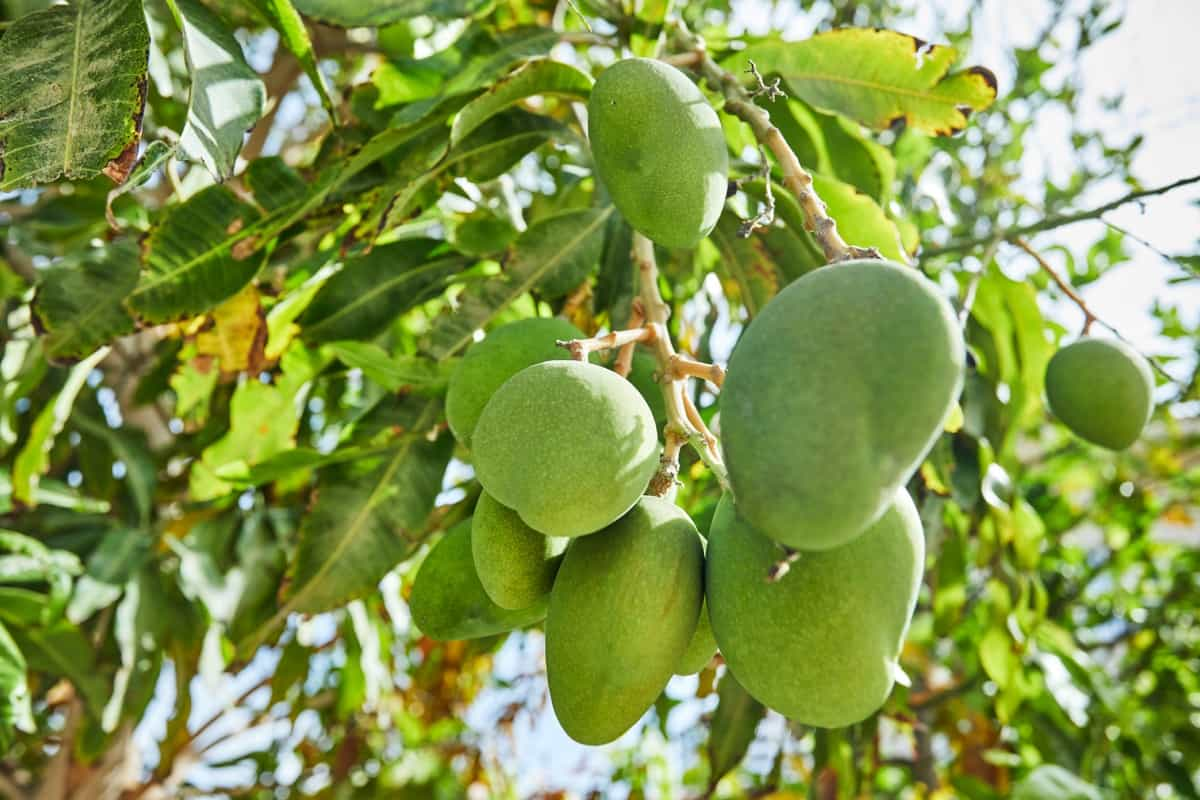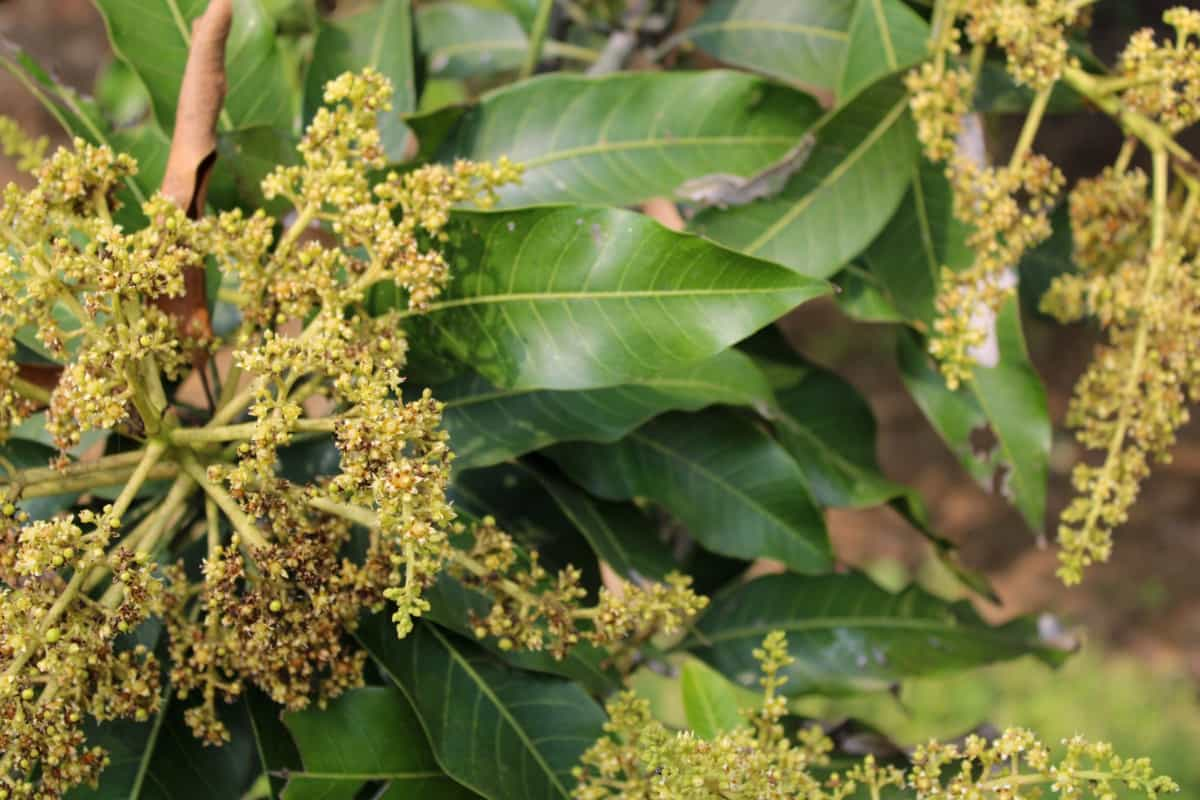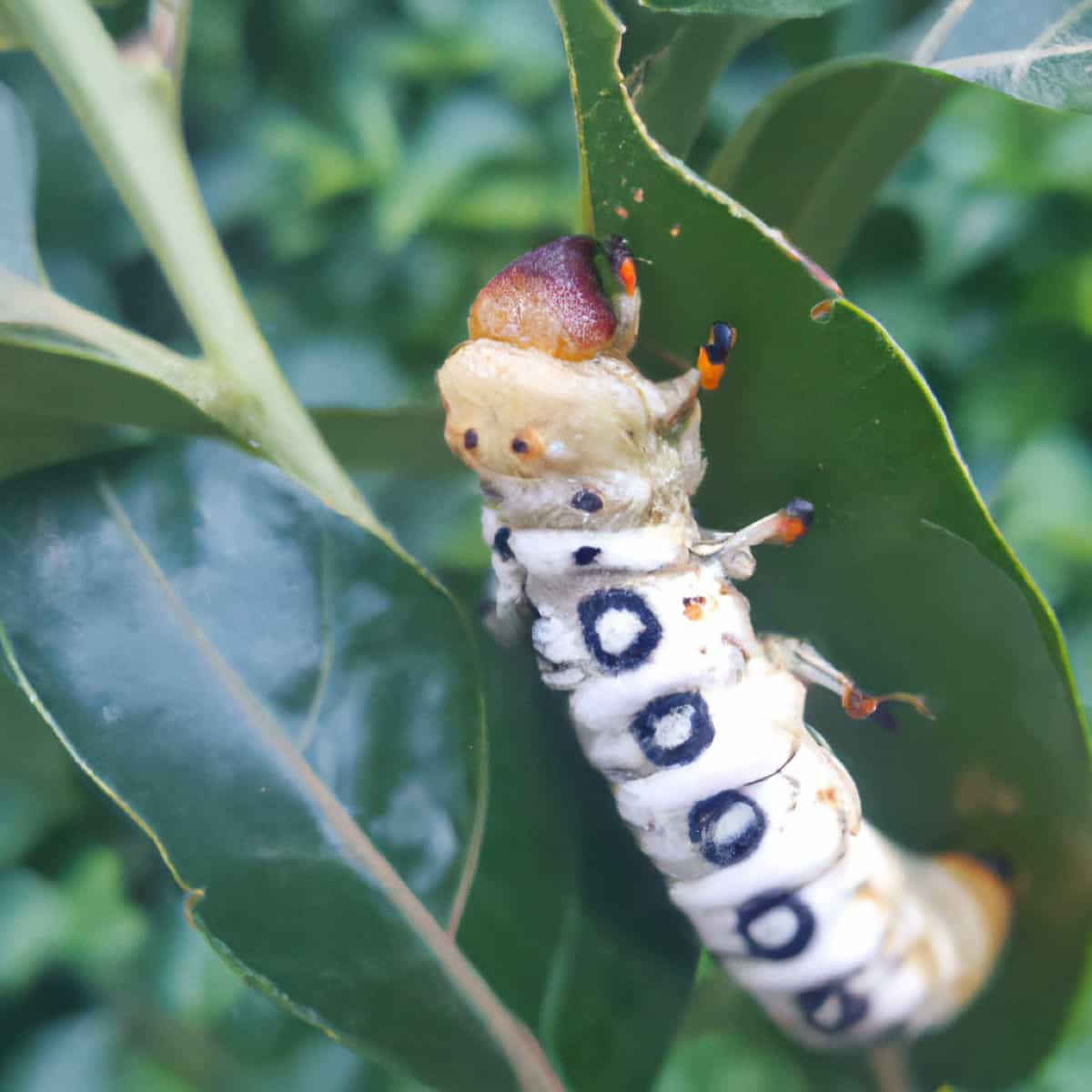The Mango Shoot Borer, Chlumetia transversa, belonging to the Family Noctuidae of the Order Lepidoptera, is a well-known moth species. This pest is native to India and South-East Asia. The larvae of this pest feed on young shoots and leaves of mango plants, causing significant damage. The damage can range from defoliation to complete removal of the terminal shoot, leading to stunted growth and reduced crop yields.

The adult moths lay eggs on the terminal shoots of the mango tree, and the larvae then tunnel into the shoot, feeding on the tissues and causing the shoot to die. To effectively manage this pest, it is important to understand its life cycle, its preferred habitats, and the best methods for controlling it. This article will provide an overview and discussion of the Mango Shoot Borer Pest in Mango crops, including its symptoms, identification techniques, and control.
Shoot Borer Pest Management in Mango
Life Cycle of Mango Shoot Borer Pest in Mango Crop
The life cycle of the mango shoot borer pest has four stages. They are egg, larva, pupa, and adult. The first stage of the life cycle is the egg stage. The female Chlumetia transversa lays its eggs on the underside of mango leaves. The eggs hatch within 5-7 days, producing small larvae. The second stage is the larval stage. The larvae feed on the mango tree’s leaves, stems, and fruit. The larvae can feed on the mango fruit by boring into the fruit and destroying the flesh. After several weeks, the larvae pupate.
The third stage is the pupal stage. During this stage, the pupae undergo metamorphosis into adults. The pupae remain in the cocoon for approximately 10-14 days. The fourth and final stage is the adult stage. The adult moths are most active at night and feed on the nectar of flowers and other food sources. The adults mate and lay their eggs on the underside of mango leaves. This cycle then repeats itself, thus completing the life cycle of the Mango Shoot Borer Pest.
Occurrence of Mango Shoot Borer Pest in Mango Crop
- Location of Mango Shoot Borer pest: This pest infests mango crops in India, Africa, Bangladesh, Sri Lanka, Thailand, Malaysia, Indonesia, Vietnam, the Philippines, the United States, Mexico, Colombia, Ecuador, and Peru.
- Host range: The mango shoot borer pest infects crops like mango, guava, papaya, citrus, avocado, cashew, litchi, peach, plum, almond, walnut, sapota, and banana.
Factors Favoring the Population Increase of Mango Shoot Borer Pest in Mango Crop
- The climates with high temperatures and moderate to high rainfall favor the pests to thrive in.
- The pest also prefers areas with abundant flowering plants, as these provide it with a steady source of food.
- Improper management and sanitation practices will cause the pest population to grow.
- The presence of alternate hosts, such as papaya, avocado, walnut, etc., will increase the pest populations.
Identification of Mango Shoot Borer Pest in Mango Crop
- Eggs: The eggs are tiny, yellowish-white, and oval in shape. They are laid in small clusters of around 5 to 10 eggs.
- Larvae: The larvae are small, yellowish-brown. They have a dark line running along the length of their long cylindrical bodies and have black-colored heads. They also have three pairs of legs.
- Pupa: The pupae are encased in a brown, leathery cocoon and are about 8-10 mm long.
- Adults: The adults are small, brown moths with a wingspan of about 2-2.5 cm, with a dark brown band running across their wings.
In case you missed it: Mango Flower Webber Pest Management: Symptoms, Treatment, Chemical, Biological, Natural, and Organic Control

Damage Symptoms of Mango Shoot Borer Pest in Mango Crop
- The primary symptom of damage is the presence of small holes in the meristematic tissues of the shoots and midribs of the leaves of mango trees.
- The larvae of the pest can also be seen inside the terminal meristematic shoots tunneling downwards.
- The larvae can be identified by their slimy trails, disposed of from the boreholes.
- The leaves may also become warped and twisted due to the larvae feeding on the inner tissues.
- The seedlings show stunted growth and a terminal bunchy appearance.
- The affected leaves of the plants will wither and droop down.
Percentage of Yield Loss in Mango due to Mango Shoot Borer Pest
- In India, the yield losses due to mango shoot borer pests are up to 30%. In Bangladesh, the percentage of yield loss is around 25%. In China, the losses are up to 25%. In the United States, the losses are 25%. In Mexico and Brazil, it is 50% and 30% respectively. In Africa, it is at 40%. In Australia, it ranges between 20%. In Indonesia, the yield losses are 20%. In Thailand, it is 15%. In the Philippines, it is 40%.
- The Economic Threshold Level (ETL) for the mango shoot borer pest is set at 10-15 larvae per tree.
Cultural Control of Mango Shoot Borer Pest in Mango Crop
- Practice proper sanitation measures like removing fallen fruits and stems, pruning damaged shoots, and removing weeds.
- Good orchard management practices such as proper irrigation, weed removal, and mulching should be practiced to reduce the pest population by reducing the availability of suitable habitats.
- Practice Summer Ploughing to expose the pupae to scorching sun and natural enemies.
Biological Control of Mango Shoot Borer Pest in Mango Crop
- Egg Parasitoid, Trichogramma chilonis, is a small wasp that lays its eggs inside the eggs of the mango shoot borer pest, thus killing the eggs before they hatch.
- Larval Parasitoid, Tachinid flies, and Winthemia quadripustulata lay their eggs inside the larvae of the pest. The eggs hatch into larvae, feed on the pest, and eventually kill it.
- The nematode, Steinernema carpocapsae, is a microscopic worm that lives in the soil and feeds on the larvae of the mango shoot borer pest.
Chemical Control of Mango Shoot Borer Pest in Mango Crop
- Spray Carbaryl, Malathion, Permethrin, Imidacloprid, Acetamiprid, or Quinalphos two times at three weeks intervals from the initiation of new foliage.
- These chemicals are usually applied through foliar application.
Organic Control of Mango Shoot Borer Pest in Mango Crop
- Intercropping involves planting several crops in the same area, creating a diverse environment that is less attractive to the pest.
- Trap cropping involves planting a crop attractive to the pest, such as corn or cassava, to attract the pest away from the main crop.
- Neem oil can be used on the leaves of mango trees to repel the pest.
Preventive Measures for Control of Mango Shoot Borer Pest in Mango Crop
- Prefer resistant mango varieties that are less susceptible to attack by the pest.
- Planting cover crops such as cowpea or legumes in the orchard helps reduce the pest population.
- The timing of flowering also affects the severity of the attack by the pest. If flowering and fruiting occur simultaneously, the pest population will increase rapidly. Therefore, staggered flowering and fruiting should be practiced to reduce the damage caused by this pest.
What is the Difference between Mango Stem Borer Pest, Batocera rufomaculata, and Mango Shoot Borer Pest, Chlumetia transversa?
Character | Mango Stem Borer | Mango Shoot Borer |
| Causal organism | Batocera rufomaculata | Chlumetia transversa |
| Type of Organism | Sawfly beetle | Moth |
| Family & Order | Cerambycidae & Coleoptera | Noctuidae & Lepidoptera |
| Stage of Pest Incidence | Mango Tree | Mango Seedling |
| Plant parts infested | Sapwood & Vascular bundles in the Main stem and its branches. | Apical Meristematic shoot tissues & Midribs of leaves. |
| Effect of damage | Girdling effect & complete blockage of water and nutrient transportation. | Stunted Growth & Terminal Bunchy Appearance. |
| Damage Symptoms | Sap oozes out, pinholes on fruits, wilting, yellowing, dieback of leaves & tunneling in the tree trunk. | Slimy trails, warping, and drooping down of twisted leaves due to downward tunneling in the seedling’s apical meristems. |
| Morphological differences | Adults:Wingspan – 4cm.Reddish-brown body.Yellowish-white spots.Have a white line along the edges of the wings. | Adults:Wingspan – 5cm.Greenish-brown body.Pair of Black spots near its posterior end.Have a dark brown band running across their wings. |
| Preferred Climate | Warm & Humid Climates. | Dry Climates. |
In case you missed it: Leaf Webber Pest Management in Mango: Symptoms, Treatment, Chemical, Biological, Natural, and Organic Control

Conclusion
The mango shoot borer pest is a major concern of mango crops, causing significant economic losses due to larval feeding and the destruction of plant tissue. Integrated pest management strategies are needed to reduce the impact of this pest, including cultural practices such as pruning, sanitation, and biological control. When appropriately implemented, these strategies can help safeguard mango production and reduce economic losses.
- Types of Fungicides Used in Agriculture
- Common Issues in the Fruit Development Stage of Pomegranate Farming
- Fruit Development Issues in Papaya: Easy Solutions and Treatment
- Soil-Borne Diseases and How to Protect Your Plants
- Practices to Prevent Disease Spread in the Garden
- From Wilted to Thriving: How to Treat Root Rot Naturally in Houseplants
- Natural Remedies to Cure Brown Spots on Fig Tree Leaves
- Natural Solutions for Poinsettia Problems: 100% Effective Remedies
- How to Control Calla Lily Problems: Natural Remedies for Leaf and Flower Problems